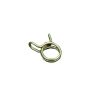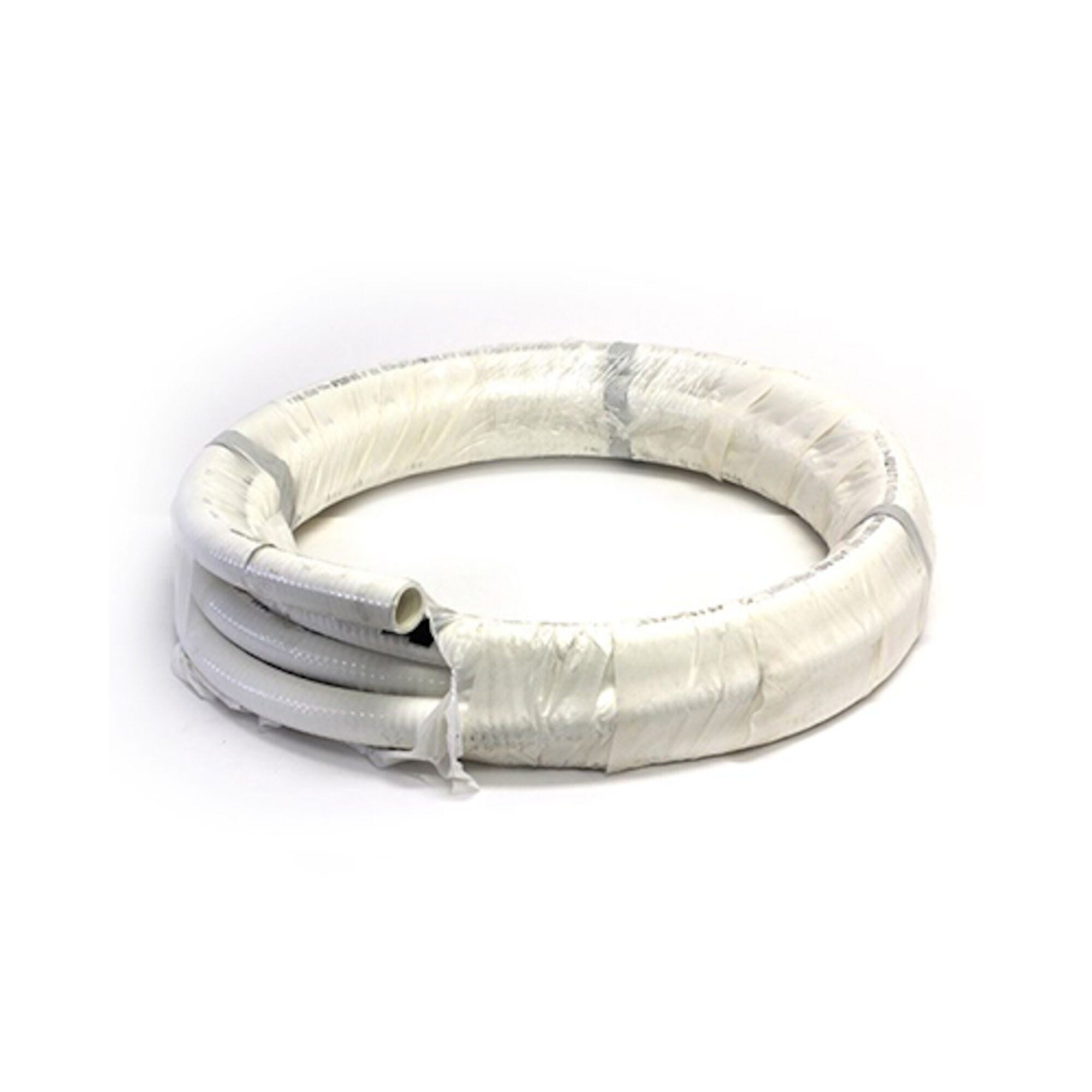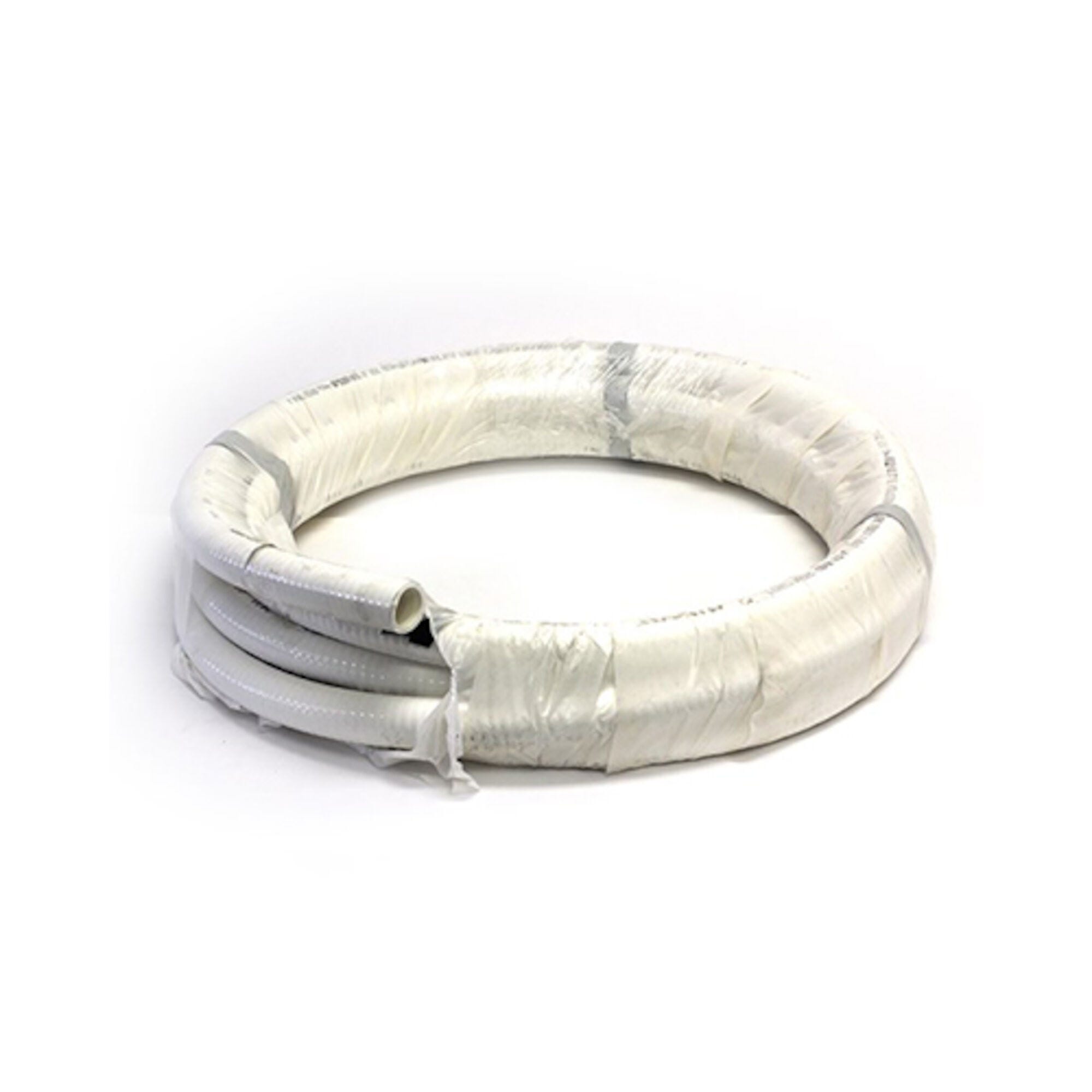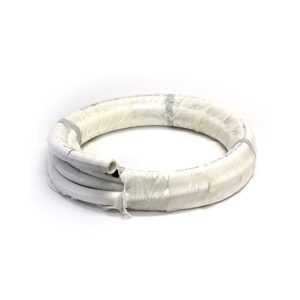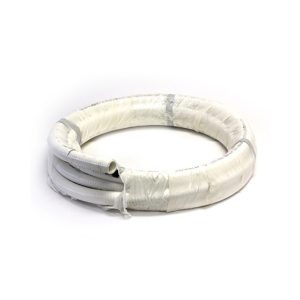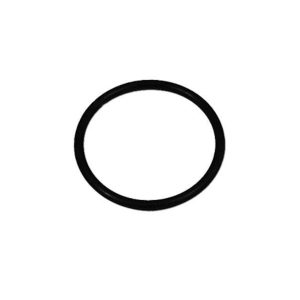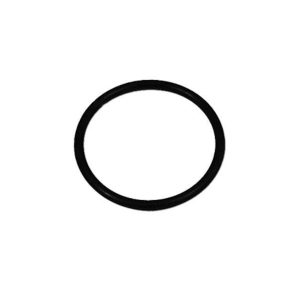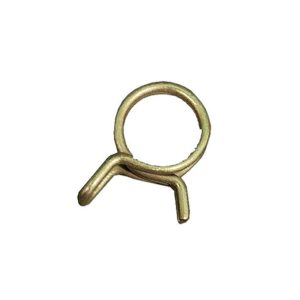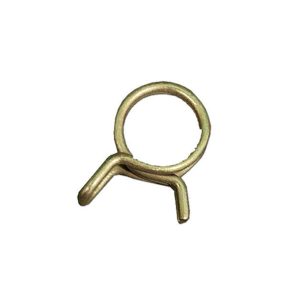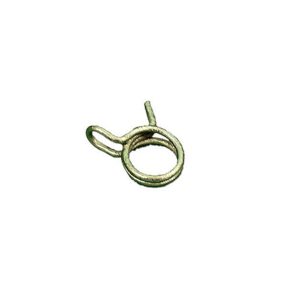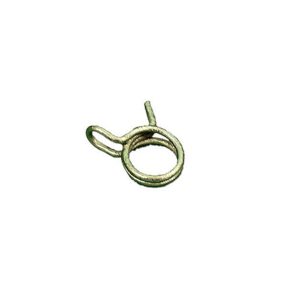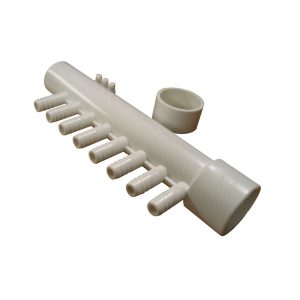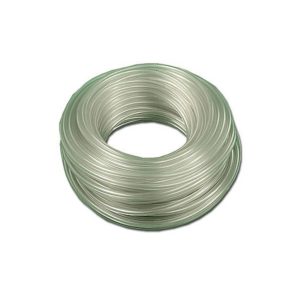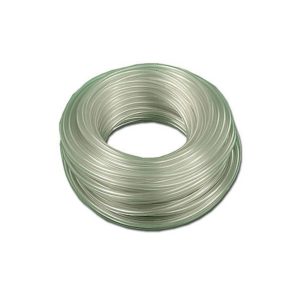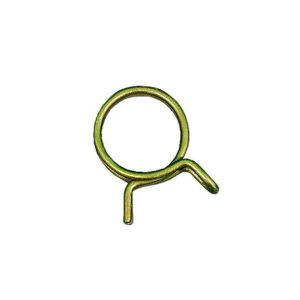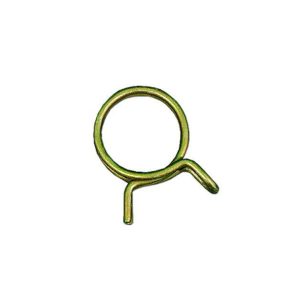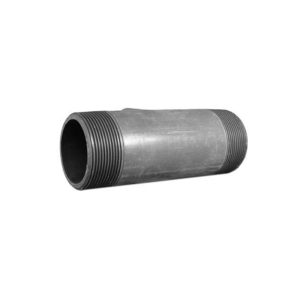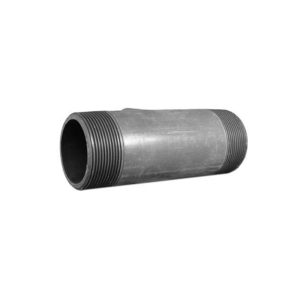1″ (Semi) Flexible Pipe / Hose 25′ Roll
$65.12
Pipe, Flex, PVC Hose, 1″ x 25′ Roll
9 in stock
Professional Grade 1″ Flexible PVC Pipe – 25′ Roll
Product Overview
As a retailer of hot tub spare parts, I’m offering this premium-quality 1″ flexible PVC pipe, specifically engineered for spa and pool installations. This 25-foot roll combines durability with flexibility for optimal plumbing solutions.
Technical Specifications
| Specification | Detail |
|---|---|
| Model Number | FLEX-10-25 |
| Diameter | 1 inch |
| Length | 25 feet |
| Material | PVC with rigid helix |
| Color | White |
| Construction | Smooth wall with rigid PVC spiral |
| Certification | APMO and NSF listed |
| Formulation | FDA non-toxic approved |
Key Features
- Premium smooth white PVC construction with rigid PVC helix
- APMO and NSF certified for swimming pools, spas, and jetted baths
- FDA non-toxic formulation for safe water circulation
- Suitable for both above and below-ground installations
- Semi-flexible design for optimal routing
- Reduces the need for additional fittings
Installation Benefits
The semi-flexible construction provides:
- Easy routing around obstacles
- Fewer joints and connection points
- Reduced flow restrictions
- Simplified installation process
- Versatile application options
Applications
- Hot tub auxiliary systems
- Pool equipment connections
- Smaller jet lines
- Water feature installations
- Filter system connections
Alternate Part Numbers
Hot Tub Plumbing
Whether you opt for rigid pipe or indeed semi-flexible (as it is not that flexible in reality) pipe, you are going to need to make some solvent weld joints. This is true whether you are building a new hot tub from scratch, adding and air source heat pump to your existing hot tub, or just doing some repairs. Below I cover all of the steps needed to ensure that you have a perfect joint, each time, every time.
Cutting the Pipe
The fist step to getting a perfect PVC solvent weld joint is cutting the pipe correctly. By correctly, I mean cleanly and I mean perpendicular to the pipe itself. Your cut should be straight and as perfect as you can get it. A good test for this is if you stand the pipe up on its end, is it vertical or is it tilting to one side? If it is tilting, it is not a perfect cut.
This is important as all of the pipes at some point will need to go into a fitting or connection. If the pipe is not cut perpendicular, then you will have one side of the pipe that makes a good joint and the other side of the pipe that does and will leak.
A joint made well doesn’t leak – a bad one, will.
Cleaning The Pipe
The second step to a perfect PVC solvent weld joint is that the pope is clean. By clean I don’t mean it is not “dirty” what I mean is that you have removed any of the grease and residue that has been left behind from manufacturing. This is especially true if you are using the semi-flexible pipe.
To do this, you are going to take a piece of glass or sand paper and you are going to rough up the edge to about 2” or 4cm in length. This is enough for the joint that you are going to make. You know when it is “clean” and has been roughed up enough when it is no longer shiny and it is a sanded dull colour – this is perfect.
Priming The Pipe
This is a somewhat optional step, but priming the pipe is the stage where you use a solvent based PVC pipe primer. This is often purple in colour. What the primer does is it too removes and dirt and grease from manufacturing process.
Personally, I tend not to use a primer and just make sure I have thoroughly roughed up the area before I apply any pipe cement to the pipe.
Cleaning the Fitting for a PVC Solvent Weld Joint
This next step is exactly the same step as you have just done with the pipe itself. You are going to take a piece of glass or sand paper and you are going to rough up the inside of the fitting 2” or 4cm in length which should take you up the internal “line” inside of the fitting.
The goal is to get the pipe into the fitting right up to this line on every single joint.
Marking Your Pipe Depth
This next step is one you should not miss out. With a permanent marker or a sharpie, you are going to mark the ideal “target” depth of the pipe that you would like to get it inside of the fitting.
To do that, hold the pipe alongside the fitting and liik for the internal line inside of the fitting. This is the maximum depth that the pipe can go into the fitting before it hits the small “lip”.
With your marker or sharpie, mark this depth on the pipe. This is the “target” as it can get confusing very quickly with how much pipe has actually gone inside of a fitting once you have done 5 or 6 you will forget!
It is also a good thing here to actually add a couple of guide marks for alignment. What I mean is put the fitting in exactly the right angle you are looking for an then put a mark on the pipe and on the fitting. This will help you align the two when you are in somewhat of a rush below.
Applying Solvent Weld
This step you do need to do quickly but don’t rush. You have about 20-25seconds before the solvent weld becomes unworkable and has dried.
Apply a good amount of solvent weld to both the pipe all the way around and the fitting. Not too much that it is dripping everywhere but also not too little that there are dry sections. Then move onto the next step.
Avoid Channelling on a PVC Solvent Weld Joint
Channelling is where you push the fitting onto the pipe and the solvent weld dries in a straight line leaving a dry patch. This channelling can lead to leaks. Therefore, what you are going to do for each of the joints is twist the pipe and the fitting when you are pushing them together. This twisting action means that you can avoid the channelling.
This is also where those guide marks that you made come into place. Firstly, you want to try and get to your target line which means that the pipe is fully inside of the connection. Next, so you don’t have to worry if your joint is at the right angle, you are going to align up the two marks you made on the fitting and on the pipe itself.
Easy right?
Wipe off the excess
There will of course be excess solvent weld on the pipe and the joint so it is good practise to use a microfiber cloth and just wipe off the excess all around the joint. It should be clean, no visible gaps and at this point, the solvent will have started to dry.
There is enough strength in the weld after 20mins for running water through under pressure and it is 4 hours until it is at its full strength.
What to do if it goes wrong
What do you do if it all goes wrong? This step is simple. Cut it out and start again. Do not try and patch up a bad joint, it will leak. Don’t try and plug a bad joint, it will leak. If the joint is not made well in the first place, you guessed it, it will leak.
PVC Solvent welds when done correctly last for almost ever. If they are not made correctly, they will leak in the future if they don’t already do so now.
A bit of practise and you can become very good at these quickly.
Happy Hot Tubbin’
Understanding the Different Types of Plumbing Fittings
PVC (polyvinyl chloride) is a widely used material for plumbing in various applications, including hot tubs and pools. PVC fittings come in different types, each with specific functions and connection methods. Here are some common types of PVC plumbing fittings and how they work:
- Socket (Slip) Fittings: Socket fittings have a smooth, socket-like opening on one end, into which the end of a PVC pipe is inserted. The connection is secured using PVC cement or adhesive. These fittings are called "slip" because the pipe slips into the socket. Socket fittings are commonly used when a strong, permanent connection is required. They are often used in straight pipe runs or when connecting pipes to equipment like pumps or filters.
- Spigot (SPG) (Male) Fittings: Spigot fittings have a smooth, tapered end that fits into the socket of another fitting or pipe. Spigot fittings are also known as "male" fittings because they have an external, male-like end. To make a connection, the spigot end of one fitting or pipe is inserted into the socket end of another fitting or pipe. This connection is typically secured with PVC cement or adhesive. Spigot fittings are versatile and are used in a variety of plumbing configurations. **Please note SPG connections only fit into other fittings, they do not fit into pipe**
- Threaded Fittings: Threaded PVC fittings have threads on one or both ends, allowing them to be screwed onto threaded pipes or other fittings. These fittings provide a secure, removable connection, making them suitable for applications where disassembly may be required, such as for maintenance or repairs. Threaded fittings often use Teflon tape or pipe thread sealant to ensure a watertight seal when screwing them together.
- Union Fittings: Union fittings consist of two parts: a threaded nut and a slip socket or spigot end. These fittings are designed for easy disassembly and reassembly without the need for cutting or re-gluing pipes. To disconnect the union, you simply unscrew the nut, separating the two parts. Union fittings are commonly used at the pump and filter connections, allowing for straightforward equipment maintenance.
- Elbow Fittings: Elbow fittings are used to change the direction of the plumbing pipe. They come in various angles, most commonly 90 degrees and 45 degrees. Elbow fittings can be either socket or spigot type, depending on how they are used in the plumbing configuration. They are essential for creating bends and turns in the PVC plumbing system.
- Tee Fittings: Tee fittings have a T-shaped design, allowing for the connection of three pipes at right angles to one another. They come in various configurations, including socket, spigot, and threaded. Tee fittings are commonly used to create branch lines in a plumbing system or to combine multiple pipes into a single line.
- Coupling Fittings: Coupling fittings are used to connect two pipes or fittings in a straight line. They are typically socket or spigot type and provide a secure, leak-resistant connection.
- Reducer Fittings: Reducer fittings are used to connect pipes of different diameters. They come in various configurations, including socket, spigot, and threaded. Reducers allow you to transition from a larger pipe size to a smaller one or vice versa.
- Cross Fittings: Cross fittings are similar to tee fittings but have four openings, forming a cross shape. They allow for the connection of four pipes at right angles to one another.
- MBT - Male Buttress Thread - this is the male thread (that sticks out on the outside) that is commonly found on pumps for example. The thread (the rough part) is on the outside.
- FBT - Female Buttress Thread. This is the female connection so the thread is on the inside.
- Barb - these tend to be tapered and pushed on fittings rather than glued.
How to Make the Perfect PVC Pipe Joint
Creating a perfect PVC pipe joint with PVC pipe cement requires precision and following the correct steps. Here's a step-by-step guide to help you achieve a strong and watertight connection:
Materials and Tools You'll Need:
- PVC pipes and fittings
- PVC pipe cement (solvent cement)
- PVC primer (if required by local codes)
- Pipe cleaner or cloth
- Pipe cutter or hacksaw
- Emery cloth or sandpaper (if needed)
Steps:
- Gather Your Materials: Ensure you have all the necessary materials and tools ready.
- Cut the Pipe: Measure and mark the PVC pipe at the desired length using a pencil or marker. Use a pipe cutter or hacksaw to make a clean, square cut. It's essential to have straight, evenly cut ends for a proper joint.
- Prepare the Pipes and Fittings: If required by local codes, apply PVC primer to the outside of the pipe end and the inside of the fitting socket. Primer helps clean and prepare the PVC surfaces for a secure bond. Allow the primer to dry for a few seconds.
- Clean the Surfaces: Even if you're not using primer, it's essential to clean the surfaces of both the pipe and the fitting. Use a pipe cleaner or a clean cloth to remove any dirt, debris, or moisture.
- Mark the Joint: It is a good idea to use a Sharpie and mark exactly where you want the pipe and the fitting to line up. When you are in a rush to the put the two pieces together it is always good to have an alightment mark.
- Apply PVC Cement: Shake or stir the PVC cement thoroughly to ensure it's well-mixed. Using an applicator brush that comes with the cement or a separate brush, apply a liberal and even coat of PVC cement to the outside of the pipe end. Apply another coat to the inside of the fitting socket.
- Assemble the Joint: Quickly insert the pipe into the fitting socket, making sure it's fully seated. Give the pipe a slight twist (about a quarter-turn) to spread the cement evenly and create a secure bond. Hold the joint firmly in place for a few seconds to prevent any movement. Then move it back to alight up to the sharpie marks you have already made.
- Wipe Off Excess Cement: With a clean cloth or rag, wipe off any excess cement that may have squeezed out around the joint. This helps create a neat and tidy appearance and ensures the joint is watertight.
- Cure Time: Allow the cement to cure for the recommended time, which is usually around 15-30 minutes, depending on the brand and type of cement. Avoid disturbing the joint during this time.
| Brand | Generic |
|---|
Related products
Generic Plumbing
Generic Plumbing
Generic Plumbing
Generic Plumbing
Generic Plumbing
Generic Plumbing
Generic Plumbing
Generic Plumbing


